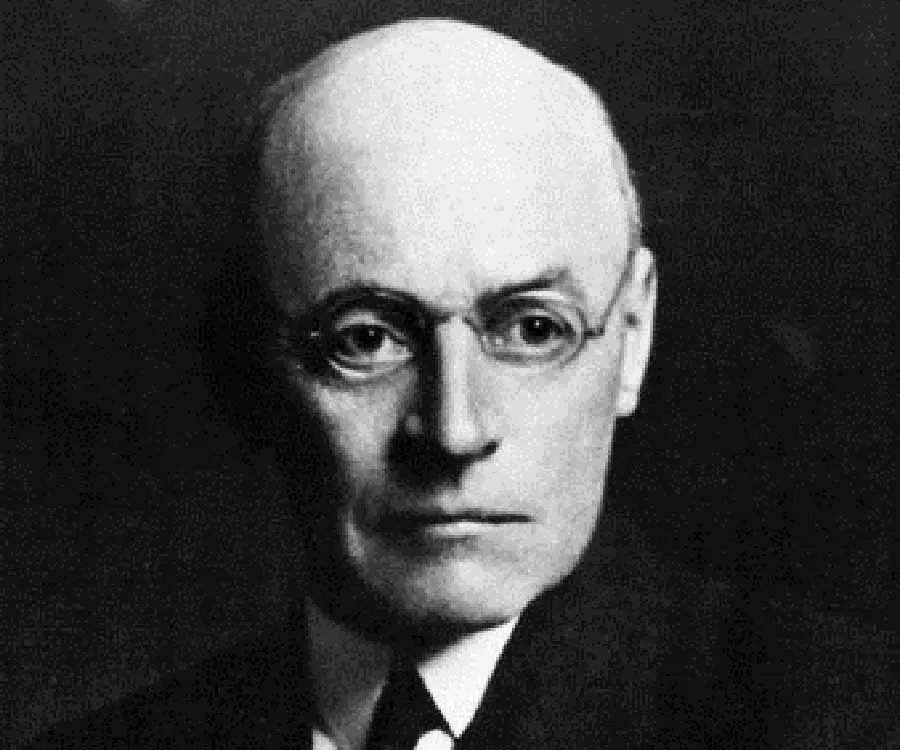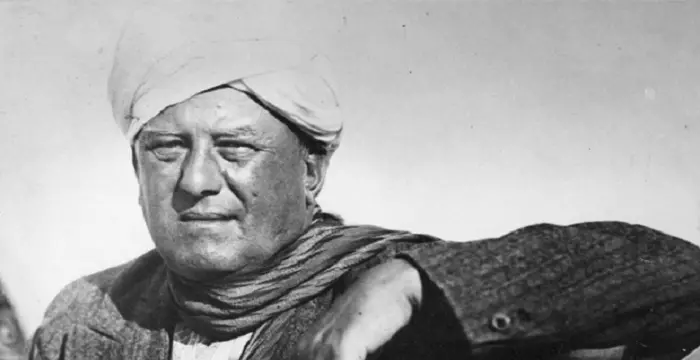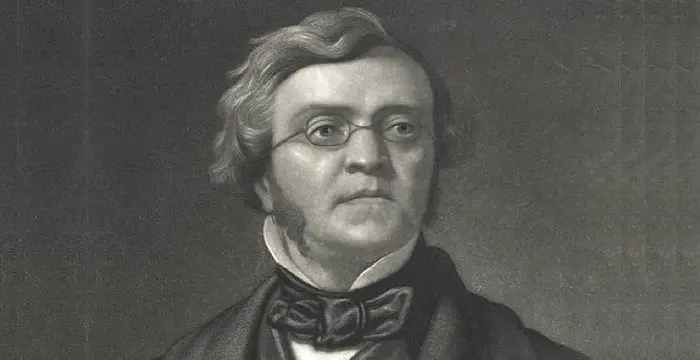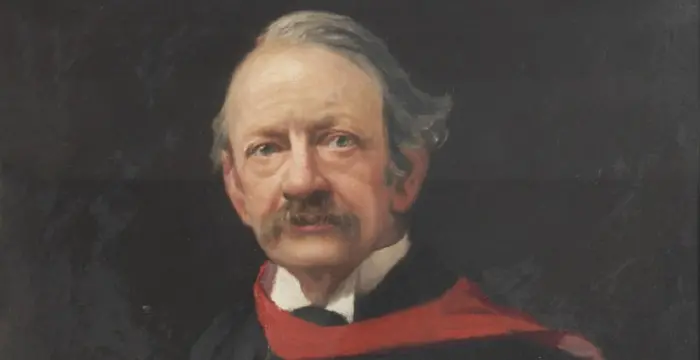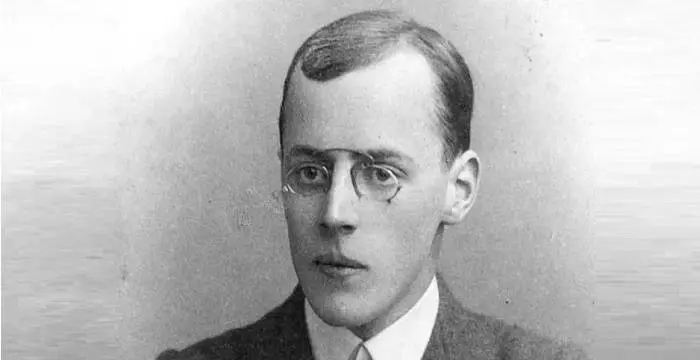
Owen Willans Richardson - University College London, Facts and Family
Owen Willans Richardson's Personal Details
Sir Owen Willans Richardson was a British physicist who was awarded the Nobel Prize in Physics in 1928 for his work on thermionic phenomenon
| Information | Detail |
|---|---|
| Birthday | April 26, 1879 |
| Died on | February 15, 1959 |
| Nationality | British |
| Famous | Trinity College, Cambridge, University College London, Scientists, Physicists |
| Spouses | Henriette Rupp (m. 1948), Lilian Maud Wilson (m. 1906–1945- her death) |
| Siblings | Charlotte Sara Richardson |
| Universities |
|
| Notable Alumnis |
|
| Discoveries / Inventions |
|
| Birth Place | Dewsbury, Yorkshire, England |
| Gender | Male |
| Father | Joshua Henry Richardson |
| Mother | Charlotte Maria Richardson |
| Sun Sign | Taurus |
| Born in | Dewsbury, Yorkshire, England |
| Famous as | Physicist |
| Died at Age | 79 |
// Famous Physicists
Henry Cavendish
Henry Cavendish was a theoretical chemist and physicist, renowned for discovery of hydrogen and calculation of the mass of earth. To know more about his childhood, profile, timeline and career read on
Walter Kohn
Nobel Laureate Walter Kohn was an Austrian-born American theoretical chemist and physicist. Check out this biography to know about his childhood, life, achievements, works & timeline.
Nikola Tesla
Nikola Tesla was a Serbian-American inventor, best known for his development of alternating current electrical systems. This biography of Nikola Tesla provides detailed information about his childhood, life, achievements, works & timeline.
Owen Willans Richardson's photo
Who is Owen Willans Richardson?
Sir Owen Willans Richardson was a British physicist who was awarded the Nobel Prize in Physics in 1928 for his work on thermionic phenomenon and especially for the discovery of the law named after him. From the beginning, he was far advanced for his age. This was corroborated not only by his school performances, but also by the fact that at the age of 22 he formulated a law on thermionic emission, which later began to be known by his name and won him Nobel Prize. It may be noted that he did this work within one year of earning his B.Sc. degree. Moreover, because of this work, he became well-known in the scientific world and was elected a Fellow of Trinity College at the age of 23. Later, he earned his D. Sc. degree from University College, London and went to the United States of America to join Princeton University as the Professor of Physics. He remained there for around eight years and came back to England on receiving an offer from King’s College, University of London. Subsequently, he joined the university as the Wheatstone Professor of Physics, remaining there until his retirement. However, he kept on working after that and published his last paper, nine years after his retirement.
// Famous Scientists
Juliane Koepcke
Juliane Koepcke is a German-Peruvian biologist, who was the lone survivor among the 92 passengers and crew of the ill-fated LANSA Flight 508 that crashed in the Peruvian rainforest on 24 December 1971. Know more about her life in this biography.
Henry Cavendish
Henry Cavendish was a theoretical chemist and physicist, renowned for discovery of hydrogen and calculation of the mass of earth. To know more about his childhood, profile, timeline and career read on
Konstantin Tsiolkovsky
Konstantin Tsiolkovsky was a Russian rocket scientist and a pioneer of astronautics. This biography provides detailed information about his childhood, family, personal life, career, achievements, etc.
Childhood & Early Life
Owen Willans Richardson was born on 26 April 1879, in Dewsbury, Yorkshire, England. His father, Joshua Henry Richardson, was a salesman in industrial tools. His mother’s name was Charlotte Maria Richardson. He had a sister, Charlotte Sara Richardson, who later married his doctoral student, Clinton Davisson.
Owen Richardson spent his early years near Leeds. Later the family shifted to a small mining town called Askern, located close to Doncaster. There he attended parish school and his performance showed that he was far advanced for his age.
In 1891, he was admitted to Batley Grammar School in Yorkshire on full scholarship, graduating from there in 1897. In the same year, he won the Entrance Major Scholarship and entered Trinity College, Cambridge, with physics, chemistry and botany.
In 1900, Richardson obtained his B.Sc. degree with first class honors in Natural Science, receiving distinction in physics and chemistry. By now, he had come in contact with J. J. Thompson at the Cavendish Laboratory and had become interested in his work on ‘cathode rays’ and subatomic electrical ‘corpuscles’.
Career
In 1900, soon after his graduation, Richardson was invited to stay back at Cambridge. He accepted the offer, choosing to work with Thompson on emission of electricity from hot bodies.
In 1901, he read two scientific papers before the Cambridge Philosophical Society. In one of them, read on 25 November, he established a law governing emission of electricity. It later became well-known as ‘Richardson’s Law’.
These papers made young Richardson quite famous and in 1902 he was elected a Fellow of Trinity College. Much later, he also won the Nobel Prize because of this work.
Meanwhile, he continued his work on the same subject. At the same time, he collaborated with H. A. Wilson and H. O. Jones on other studies in physical and organic chemistry. His works during this period earned him a D.Sc. from the University College London.
In 1906, he left Cavendish Laboratory and joined Princeton University, New Jersey, U.S.A, as Professor of Physics. He remained here until 1914, working mostly on thermionic emission, photoelectric action, and the gyromagnetic effect.
Sometimes he worked alone and at other times, he collaborated with others, perfecting instruments and making experiments. He also published many papers during this period. In one such article, published in 1909 in Philosophical Magazine, he first coined the term ‘thermionics’.
Sometime now, he also began writing his first book, ‘The Electron Theory of Matter’. Published in 1914, the book mainly consists of articles developed from lectures given to graduate students at Princeton. For many years, it was considered as a classic text book for students working on radio and electronics.
In 1911, Richardson was elected a member of the American Philosophical Society. Subsequently, he started thinking of taking up American citizenship. However, on receiving an offer from King’s College, London in 1913, he abandoned the plan. In the same year, he was also elected a Fellow at Royal Society.
In 1914, Richardson went back to England to become Wheatstone Professor of Physics at King’s College, University of London. He remained there until his retirement in 1944.
During this period, he worked on various subjects such as thermionics, photoelectric effects, magnetism, the emission of electrons by chemical action, the theory of electrons, the quantum theory, the spectrum of molecular hydrogen, soft X-rays, the fine structure of Ha and Da.
During World War I, he became involved in secret military research into telecommunication and production of wireless telegraphy and telephony. In spite of that, he managed to publish a few works concerning spectroscopy; also on Bohr’s theory of the atom, and Einstein’s analysis of the photoelectric effect.
In 1921–1922, he was appointed as the President of Section A (physics) of the British Association for the Advancement of Science. All along, he continued his teaching assignments, finally relinquishing it in 1924.
In 1924, he was appointed as the Yarrow Research Professor at the Royal Society and also as the Director for Research in Physics at King’s College. From 1926 to 1928, he served as president of the Physical Society.
Later when the World War II broke out, he reduced other engagements and began working on matters of military importance such as radar, sonar, electronic test instruments, and associated magnetrons and klystrons.
Richardson retired in 1944 and shifted to his country home in Hampshire. However he continued working from there and his last paper, with E. W. Foster, appeared in 1953.
All through his life, he guided many research students many of whom later became Nobel laureate. Among them were: A. H. Compton (1927), C. J. Davisson (1937), and Irving Langmuir (1932).
Major Works
Although Richardson worked on various subjects, he is best known for his work on emission of electricity from hot bodies. In 1901, when he was barely twenty-two years old, he experimentally established that the current from a heated wire depend exponentially on the temperature of the wire with a mathematical form similar to the Arrhenius equation.
In a paper read before the Cambridge Philosophical Society on 25 November 1901 , he announced that, "If then the negative radiation is due to the corpuscles coming out of the metal, the saturation current s should obey the law "s = AT1/2 e-b/T". Later, it became known as Richardson’s law.
Awards & Achievements
Owen Willans Richardson received the 1928 Nobel Prize in Physics "for his work on the thermionic phenomenon and especially for the discovery of the law named after him”.
In addition, he also received the Hughes Medal in 1920 and Royal Medal in 1930.
Richardson was elected a Fellow of Trinity College in 1902 and a member of the American Philosophical Society in 1911. He also received honorary degrees from the Universities of St. Andrews, Leeds, and London.
In 1939, he was made a Knight of the British Empire.
Personal Life & Legacy
In 1906, Richardson married Lilian Maud Wilson, the sister of well-known physicist Harold Wilson, who was also his colleague at the Cavendish Laboratory. The couple had two sons and a daughter. One of them was Harold Owen Richardson who specialized in Nuclear Physics. Lilian died in 1945.
Later in 1948, Richardson married Henriette Rupp, who was also a physicist.
Richardson died on 15 February 1959, in his home in Alton, Hampshire, England.
Emission law, which he proposed in 1901, has been named 'Richardson’s Law' after him.
// Famous University College London
Pietro Boselli
Pietro Boselli is an Italian model, engineer, teacher, and fitness athlete who became famous as the ‘world’s sexiest math teacher’. Check out this biography to know about his birthday, childhood, family life, achievements and fun facts about him.
David Attenborough
Sir David Attenborough is an English broadcaster and naturalist. This biography offers detailed information about his childhood, life, works, achievements, trivia and timeline.
Robert Browning
Robert Browning was a famous English poet and playwright. Check out this biography to know about his childhood, family life, achievements and other facts about his life.
Owen Willans Richardson's awards
| Year | Name | Award |
|---|---|---|
Other | ||
| 0 | FRS (1913) | |
| 0 | Royal Medal (1930) | |
| 0 | Nobel Prize in Physics (1928) | |
| 0 | Hughes Medal (1920) | |
Owen Willans Richardson biography timelines
- // 26th Apr 1879Owen Willans Richardson was born on 26 April 1879, in Dewsbury, Yorkshire, England. His father, Joshua Henry Richardson, was a salesman in industrial tools. His mother’s name was Charlotte Maria Richardson. He had a sister, Charlotte Sara Richardson, who later married his doctoral student, Clinton Davisson.
- // 1891 To 1897In 1891, he was admitted to Batley Grammar School in Yorkshire on full scholarship, graduating from there in 1897. In the same year, he won the Entrance Major Scholarship and entered Trinity College, Cambridge, with physics, chemistry and botany.
- // 1900In 1900, Richardson obtained his B.Sc. degree with first class honors in Natural Science, receiving distinction in physics and chemistry. By now, he had come in contact with J. J. Thompson at the Cavendish Laboratory and had become interested in his work on ‘cathode rays’ and subatomic electrical ‘corpuscles’.
- // 1900In 1900, soon after his graduation, Richardson was invited to stay back at Cambridge. He accepted the offer, choosing to work with Thompson on emission of electricity from hot bodies.
- // 1901Although Richardson worked on various subjects, he is best known for his work on emission of electricity from hot bodies. In 1901, when he was barely twenty-two years old, he experimentally established that the current from a heated wire depend exponentially on the temperature of the wire with a mathematical form similar to the Arrhenius equation.
- // 25th Nov 1901In 1901, he read two scientific papers before the Cambridge Philosophical Society. In one of them, read on 25 November, he established a law governing emission of electricity. It later became well-known as ‘Richardson’s Law’.
- // 25th Nov 1901In a paper read before the Cambridge Philosophical Society on 25 November 1901 , he announced that, "If then the negative radiation is due to the corpuscles coming out of the metal, the saturation current s should obey the law "s = AT1/2 e-b/T". Later, it became known as Richardson’s law.
- // 1902These papers made young Richardson quite famous and in 1902 he was elected a Fellow of Trinity College. Much later, he also won the Nobel Prize because of this work.
- // 1906 To 1914In 1906, he left Cavendish Laboratory and joined Princeton University, New Jersey, U.S.A, as Professor of Physics. He remained here until 1914, working mostly on thermionic emission, photoelectric action, and the gyromagnetic effect.
- // 1906 To 1945In 1906, Richardson married Lilian Maud Wilson, the sister of well-known physicist Harold Wilson, who was also his colleague at the Cavendish Laboratory. The couple had two sons and a daughter. One of them was Harold Owen Richardson who specialized in Nuclear Physics. Lilian died in 1945.
- // 1909Sometimes he worked alone and at other times, he collaborated with others, perfecting instruments and making experiments. He also published many papers during this period. In one such article, published in 1909 in Philosophical Magazine, he first coined the term ‘thermionics’.
- // 1911 To 1913In 1911, Richardson was elected a member of the American Philosophical Society. Subsequently, he started thinking of taking up American citizenship. However, on receiving an offer from King’s College, London in 1913, he abandoned the plan. In the same year, he was also elected a Fellow at Royal Society.
- // 1914Sometime now, he also began writing his first book, ‘The Electron Theory of Matter’. Published in 1914, the book mainly consists of articles developed from lectures given to graduate students at Princeton. For many years, it was considered as a classic text book for students working on radio and electronics.
- // 1914 To 1944In 1914, Richardson went back to England to become Wheatstone Professor of Physics at King’s College, University of London. He remained there until his retirement in 1944.
- // 1921 To 1924In 1921–1922, he was appointed as the President of Section A (physics) of the British Association for the Advancement of Science. All along, he continued his teaching assignments, finally relinquishing it in 1924.
- // 1924 To 1928In 1924, he was appointed as the Yarrow Research Professor at the Royal Society and also as the Director for Research in Physics at King’s College. From 1926 to 1928, he served as president of the Physical Society.
- // 1928Owen Willans Richardson received the 1928 Nobel Prize in Physics "for his work on the thermionic phenomenon and especially for the discovery of the law named after him”.
- // 1939In 1939, he was made a Knight of the British Empire.
- // 1944 To 1953Richardson retired in 1944 and shifted to his country home in Hampshire. However he continued working from there and his last paper, with E. W. Foster, appeared in 1953.
- // 1948Later in 1948, Richardson married Henriette Rupp, who was also a physicist.
- // 15th Feb 1959Richardson died on 15 February 1959, in his home in Alton, Hampshire, England.
// Famous Trinity College, Cambridge
Isaac Newton
Isaac Newton was an English scientist and mathematician, who discovered gravitation and Newtonian Mechanics. Read this biography to find more on his life.
Aleister Crowley
Aleister Crowley was an occultist and ceremonial magician who founded the ethical philosophy of Thelema. This biography of Aleister Crowley provides detailed information about his childhood, life, achievements, works & timeline.
William Makepeace Thackeray
William Thackeray was an English novelist and satirist. Read this brief biography to find more on his life & timeline.
Srinivasa Ramanujan
Srinivasa Ramanujan was an Indian mathematician who made significant contributions to mathematical analysis, number theory, and continued fractions. Check out this biography to know about his childhood, life, achievements, works & timeline. .
Jared Diamond
Jared Mason Diamond is an American scientist and author reputed for his highly acclaimed and popular science books.
J. J. Thomson
J.J. Thomson was an English physicist and mathematician. This biography profiles his childhood, life, academic career, research and timeline.
Owen Willans Richardson's FAQ
What is Owen Willans Richardson birthday?
Owen Willans Richardson was born at 1879-04-26
When was Owen Willans Richardson died?
Owen Willans Richardson was died at 1959-02-15
Where was Owen Willans Richardson died?
Owen Willans Richardson was died in Alton, Hampshire, England
Which age was Owen Willans Richardson died?
Owen Willans Richardson was died at age 79
Where is Owen Willans Richardson's birth place?
Owen Willans Richardson was born in Dewsbury, Yorkshire, England
What is Owen Willans Richardson nationalities?
Owen Willans Richardson's nationalities is British
Who is Owen Willans Richardson spouses?
Owen Willans Richardson's spouses is Henriette Rupp (m. 1948), Lilian Maud Wilson (m. 1906–1945- her death)
Who is Owen Willans Richardson siblings?
Owen Willans Richardson's siblings is Charlotte Sara Richardson
What was Owen Willans Richardson universities?
Owen Willans Richardson studied at Trinity College, Cambridge,University College London
What was Owen Willans Richardson notable alumnis?
Owen Willans Richardson's notable alumnis is Trinity College, Cambridge, University College London
What is Owen Willans Richardson's inventions/discoveries?
Richardson’s Law was invented (or discovered) by Owen Willans Richardson
Who is Owen Willans Richardson's father?
Owen Willans Richardson's father is Joshua Henry Richardson
Who is Owen Willans Richardson's mother?
Owen Willans Richardson's mother is Charlotte Maria Richardson
What is Owen Willans Richardson's sun sign?
Owen Willans Richardson is Taurus
How famous is Owen Willans Richardson?
Owen Willans Richardson is famouse as Physicist



